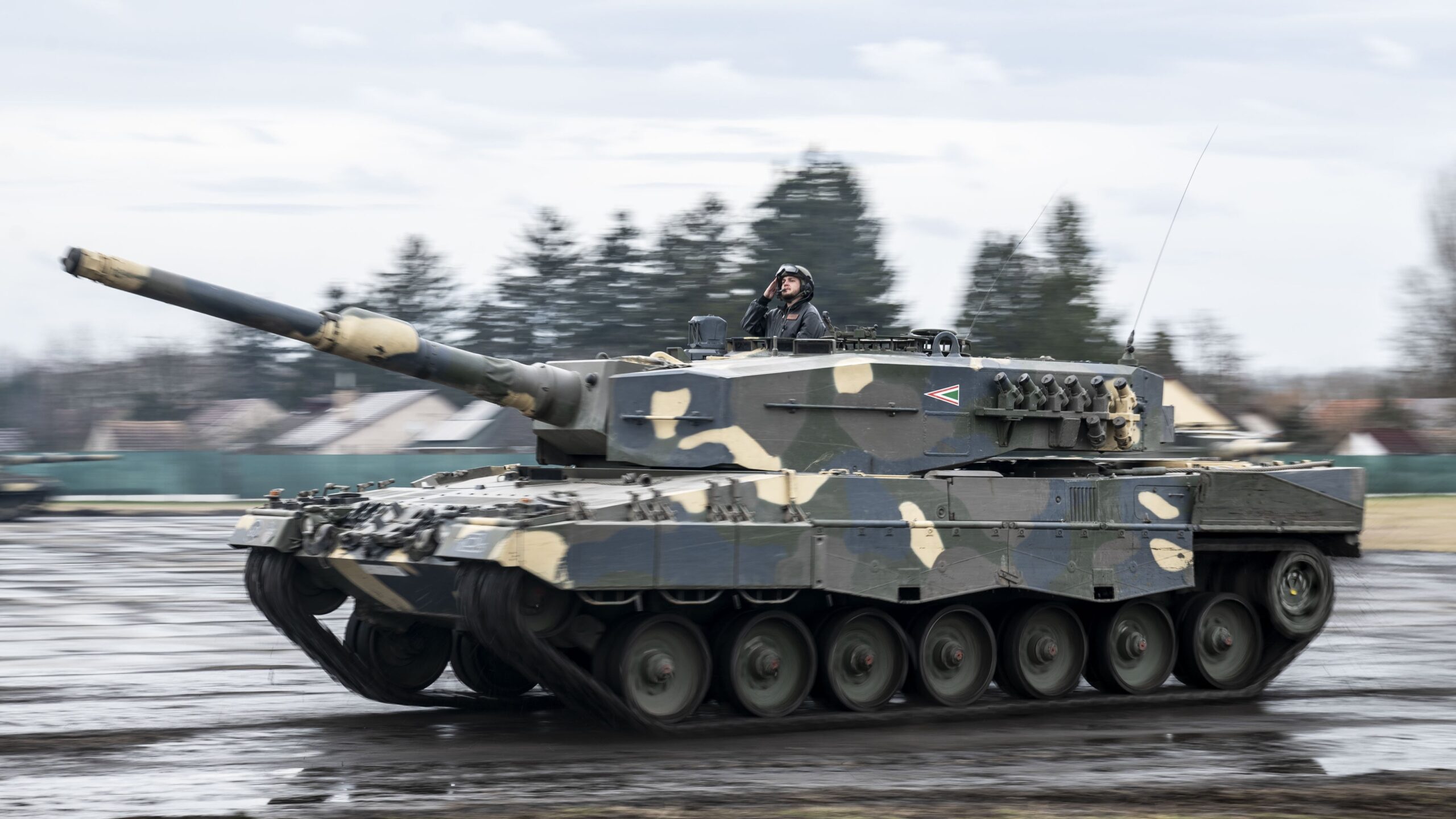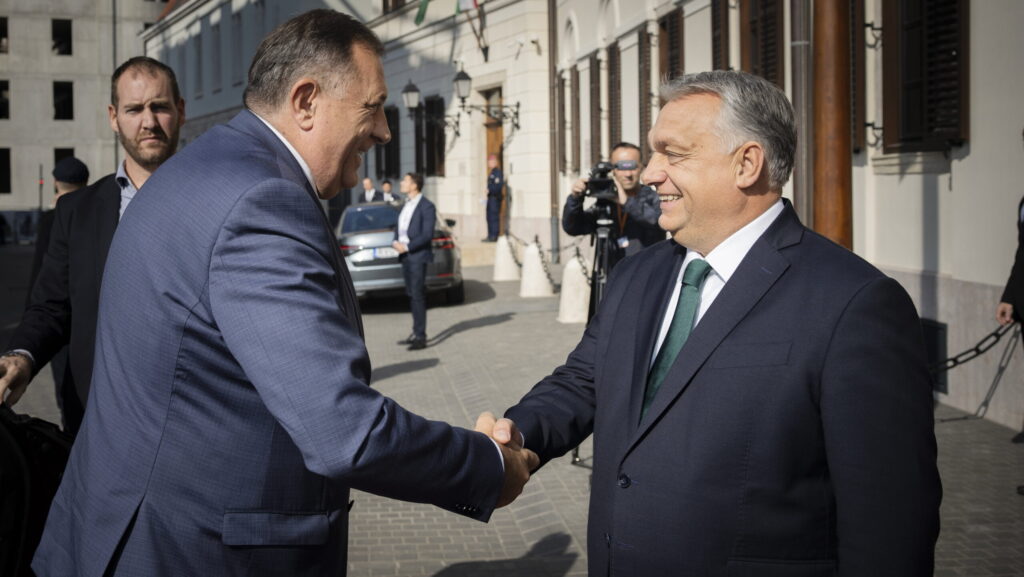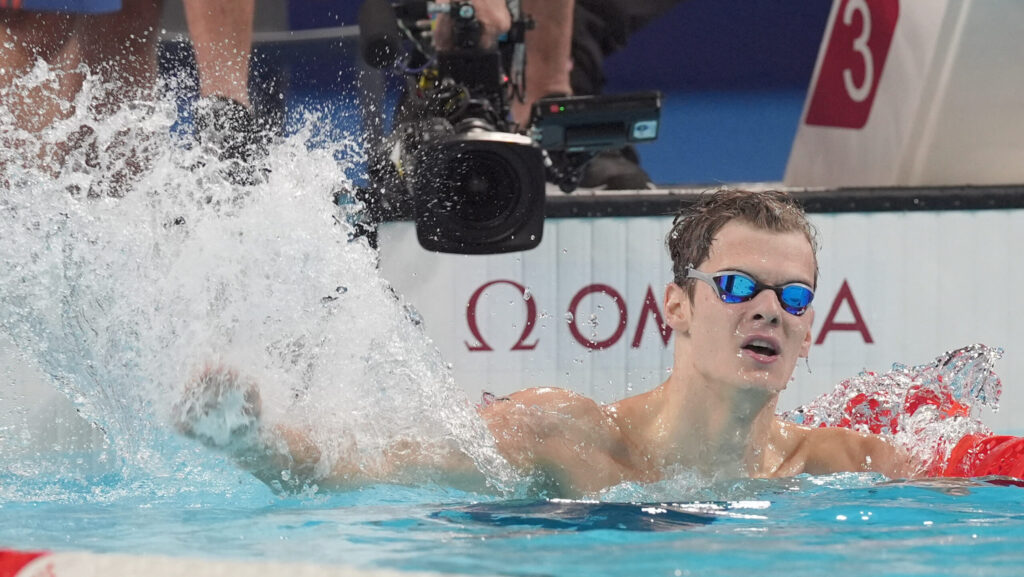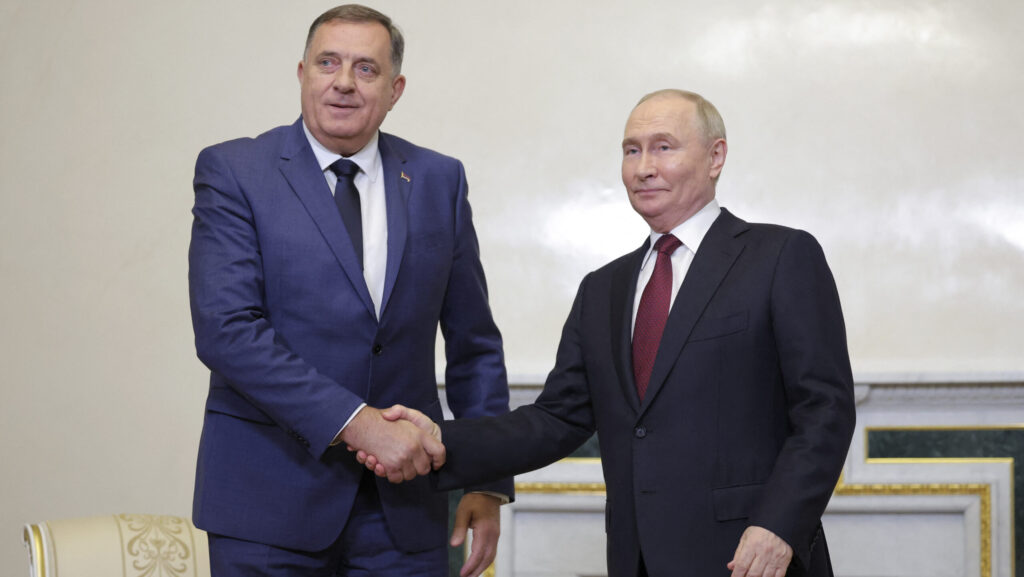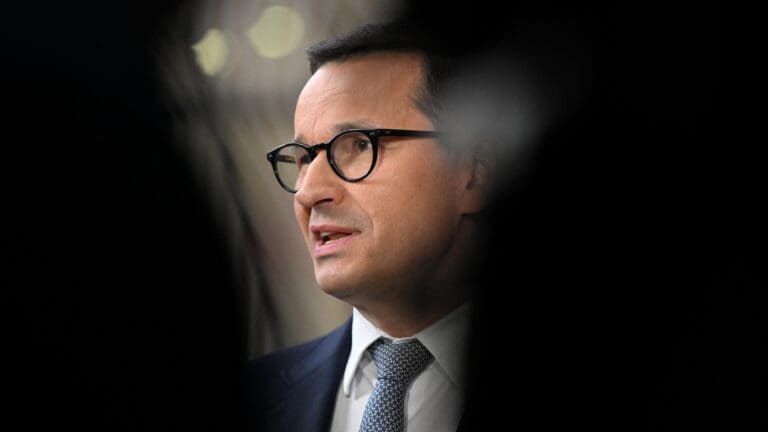The European Defence Industry’s Quest: The Legacy of the Past, the Challenges of the Present and Future Opportunities
‘The two main problems with war are that it is expensive and that they shoot back’ — Kálmán Mikszáth
In the final instalment of our three-part series, we address the main difficulties that stand in the way of strengthening the European defence sector.
The European defence industry faces a unique set of challenges and opportunities as it seeks to evolve amid changing global security dynamics. Historically, Europe has relied heavily on the United States for its defence capabilities, a reliance that, while ensuring interoperability within NATO, has increasingly limited Europe’s ability to develop independent defence capabilities. As geopolitical tensions escalate and new conflicts demand a rapid and coordinated response, the European Union is confronting the need for a stronger, more self-sufficient defence sector that can support its security objectives. However, this goal is not without obstacles.
This article explores the complexities and structural issues that hinder the development of a competitive European defence industry, from dependency on the US and the limitations of internal market dynamics to the critical need for increased funding and coordinated policy efforts. We first provide an overview of Europe’s reliance on external defence suppliers, particularly the US, then analyse the internal fragmentation that challenges the EU’s defence sector. Finally, the article discusses ambitious new funding strategies and policy goals aimed at reshaping Europe’s defence capabilities by 2030. Through this exploration, we aim to highlight why strengthening Europe’s defence capabilities is not merely a matter of national security but a crucial step towards ensuring long-term stability in a rapidly changing global landscape.
Under the Shadow of the Big Brother
The first factor we must mention is the excessive dependence on the United States’ defence industry. Out of the total €75 billion spent by member states on defence procurement orders between June 2022 and June 2023, 78 per cent went to suppliers outside the EU, with 63 per cent ending up in the United States. The US foreign military sales in Europe increased by 89 per cent between 2021 and 2022. However, the US market remained closed to European companies. The report cites the example of the A400M or MRTT transport aircraft, none of which were ordered by the US Air Force from Europe, despite not having a similar type produced in the US[1] In contrast, numerous European countries (Germany, Italy, the Netherlands, Denmark, Norway, Belgium, Poland, Finland, Czech Republic, Romania, and the United Kingdom) have purchased or ordered F-35 fighter jets.
While procurement from the US may be justified in some cases, as the EU’s supply lacks certain key capacities, such as strategic airlifters, heavy military helicopters, long-range missile defence systems, fifth-generation fighter jets, and drones[2], in many other cases, European alternatives exist for the purchased products, yet they are not chosen. Or, even if the desired product is not currently available, there would be a solution that the European defence industry could quickly make available to meet the demand. However, it is often more convenient to order existing US products. This, however, is only enough to keep the European defence industry on life support. Besides convenience, there are several other reasons why US defence products are currently more trusted in Europe.
The report identifies four reasons why EU member states prefer procurement from the United States. The US Foreign Military Sales (FMS) program simplifies administrative processes, as the US government assists with procurement and contracting at the government level. In addition, European member states are often less familiar with the offerings of their domestic defence industry, and EU governments do not encourage their own demand side for ‘domestic’ procurement, which has a negative impact on both volume and demand. Thirdly, US products are more readily available, have a better international reputation, offer better value for money, and appear to be more reliable in terms of quality. Finally, many EU member states prioritize close military interoperability with the US, as they cannot imagine a military intervention without US participation, and this capability is also essential for the NATO alliance.[3]
Dependence and American Influence
Following the end of the Cold War, the peaceful decades that followed in the 1990s, under the shadow of the American security umbrella, led to the neglect of defence and the atrophy of the European military and defence industry.[4] The reduced operations of the European defence industry also focused more on profitable exports rather than meeting the shrinking domestic demand.
The United States, often rightly and loudly, criticized its European NATO allies for not bearing their share of the collective defence burden due to underfunding their defence budgets. Robert Gates, the then US Secretary of Defence, warned in 2011:
‘The blunt reality is that there will be dwindling appetite and patience in the U.S. Congress – and in the American body politic writ large – to expend increasingly precious funds on behalf of nations that are apparently unwilling to devote the necessary resources or make the necessary changes to be serious and capable partners in their own defence. Nations apparently willing and eager for American taxpayers to assume the growing security burden left by reductions in European defence budgets. Indeed, if current trends in the decline of European defence capabilities are not halted and reversed, Future U.S. political leaders– those for whom the Cold War was not the formative experience that it was for me – may not consider the return on America’s investment in NATO worth the cost.’[5]
This attitude of the United States has remained practically unchanged since then.[6] However, it is worth looking behind the rhetoric and examining to what extent the United States practices double standards regarding Europe’s defence capabilities. The US likes to emphasize that NATO member states should increase their defence expenditures, often highlighting the importance of collective defence and the principle of shared burdens. Yet, this call loses its credibility and purely altruistic nature in light of the fact that the US is the largest supplier and beneficiary of the European defence industrial market.
As noted above, European countries purchase significant amounts of American weapon systems and military equipment, making US companies the main beneficiaries of the increased defence budgets within NATO. This situation creates tensions and a fragmented will within the EU in processes aimed at strengthening the independence and competitiveness of the European defence industry. It also raises the question of whether Washington’s primary goal is the collective defence of the allies or the profit maximization of American arms manufacturers.
Is Europe Catching Up?
The solution is not to reduce defence spending but to channel increased spending into the appropriate areas, specifically the European defence industry.
In the post-Cold War period, European countries’ defence expenditures significantly decreased year by year. The first turning point in this trend was the Russian annexation of Crimea. In response, at the 2014 NATO summit in Wales, member states agreed to allocate at least 2 per cent of their GDP to defence. At least on paper, as despite the agreed lower threshold, it took many years for most member states to begin approaching the set target. The new chapter of the Russo–Ukrainian war in 2022 brought the final breakthrough, but a truly decisive turning point can only be spoken of starting this year.
In terms of specific numbers, the NATO European region has come very close to achieving the set target of 2 per cent. By 2024, the number of countries reaching 2 per cent has increased to 23, leaving only seven countries below this threshold (although these are all EU members) —but the missing years are difficult to catch up on quickly; since 2000, European defence expenditures have only grown by about 50 per cent by 2023[7]. In contrast, Russia and China have significantly increased their defence expenditures over the past decades. Russia’s defence spending has grown almost twelvefold since 2000 (2000: $9.23M, 2023: $109M), while China’s defence spending has also increased more than tenfold during this period, amounting to $224 billion last year. In the case of China, many people talk about even larger sums, as they believe that a significant part of its investments in this area are being concealed.
However, when considering this, it should also be considered that European NATO member states started from a much higher base in 2000 than their rivals. Together, they spent around $180 billion on defence at that time. However, it should also be emphasized that this figure is now around $476 billion.[8]
More Money, Less Ammunition: The North Atlantic Defence Paradox
At first glance, it seems that Europe is devoting more than enough resources to defence to keep pace with its competitors. However, the situation is not so simple. The defence industry is not just about quantity; quality plays a much more significant role. Therefore, although Europe, as a whole, spends more on defence than other regions, its efficiency is not enough to compete effectively. The emphasis is therefore on the quality aspects of the defence industry, which are essential for building and maintaining real defence capabilities.
While it may seem obvious to sum up the defence expenditures of EU member states and compare them to the spending of competitors, this is a misleading method. One of the main issues with the European defence industry is its fragmentation and dispersal. Neither the defence sector nor the economy is integrated to the extent seen in competitors like the US, China, and Russia. It does not form a cohesive whole, is not directed from a central authority, and in many respects, is fragmented.
Even if we are willing to overlook the problem of perceived unity, it is strikingly evident in the lag in production capacity and poor production performance. An excellent example of this is the field of ammunition production, which perfectly illustrates the shortcomings of the defence industry. The simple fact is that together, the European Union and the United States cannot produce as much ammunition in a year as Russia alone.[9] The capacity of the EU and the US is around 1.2 million artillery shells, compared to Russia’s 3 million annually.
It is legitimate to ask how Russia, with a defence budget of $109 billion, can outpace the North Atlantic alliance, which has a budget of $1.47 trillion, more than 13 times as much, not only in terms of artillery shells, but also in terms of tanks and missiles!
Some attribute this discrepancy to differing motivations behind the conflicts[10]: while NATO is fighting a war it wants to win, Russia sees its efforts as essential for survival. Consequently, American defence contractors continue to prioritize profit over urgent reforms, leading to delays and cost overruns in various military projects, including artillery shells.
However, in the context of the Russian-Ukrainian conflict, we are witnessing a serious struggle for resources. A senior NATO official recently told CNN that the current situation can be characterized as a ‘production war.’ The outcome of the Ukrainian conflict will depend on the extent to which the parties are able to equip themselves to fight such a war.
In May 2021, shortly before the Russian invasion, the US decided to halve its budget for the production of 155mm ammunition, reducing production to just 6,200 units per month[11]. In contrast, Russia is capable of producing 250,000 152mm shells per month. At the front, Russian guns fire about 10,000 rounds per day, while Ukrainian guns fire 2,000. The US aims to increase its production capacity to 100,000 units per month by the end of 2025, which is undoubtedly progress but still does not seem sufficient. Even more so since Rheinmetall has signed an €8.5 billion contract with the German army to produce up to 700,000 artillery shells and 10,000 tons of gunpowder by 2025. This means that the US/NATO countries will be able to produce around 2 million shells per year.
Artillery shell production is not only an important indicator of economic capacity but also has a decisive impact on the war’s ultimate outcome. Although the United States and its allies have provided Ukraine with numerous advanced military assets, including M-1 Abrams tanks and F-16 fighter jets, military analysts suggest that the war is likely to be decided by which side can fire more artillery shells. Artillery remains a crucial factor in modern warfare—currently responsible for 80 per cent of casualties—and as the conflict continues, ammunition production will be key for both sides. NATO’s primary concern today revolves around ammunition, particularly artillery shells, as Russia has gained a significant production advantage in this area, resulting in considerable battlefield benefits.
Funding Challenges: Modest EDIP Budget and a Radical Draghi Report Solution
One of the most crucial issues remaining is the problem of funding: how much money is needed to implement the necessary changes, and how much are EU member states currently spending on defence? Limited funding and low demand significantly hinder defence manufacturers from maintaining and expanding production. To ensure continuous production that meets the demands of modern warfare, measures are needed to stimulate innovation and ensure sustainable production capacity.
Many suggest that in the current environment, spending needs to increase not just to 2 per cent, but to 3 per cent or even 4 per cent for Europe to overcome its disadvantages, create a competitive defence sector, and meet the challenges of the newly established security environment within a foreseeable timeframe.
The European Defence Industrial Strategy (EDIS)[12] has set three goals to be achieved by the member states by 2030:
- At least 40 per cent of defence equipment should be purchased collaboratively (‘in a collaborative manner’)
- At least half of the defence procurement budget should be spent on products manufactured in Europe
- At least 35 per cent of defence products should be sourced through trade between EU member states.
These numbers set ambitious targets, but so far, only a modest €1.5 billion has been allocated to boosting the European defence industry under the European Defence Industrial Program (EDIP). For the European defence industrial sector, which has an annual turnover of around €70 billion, this is practically negligible and gives the program a pilot-like character. In contrast, the Draghi report speaks of a much more realistic figure in terms of volume. Where this money will come from is another question. Nevertheless, the capital needs for defence investments, in alignment with the Commission, are set at €500 billion over the next 10 years. This means an additional €50 billion investment in the sector annually.
Regarding the proposed figures, the Strategy claims that to ensure long-term and sustainable demand for the defence industry, at least 40 per cent of defence equipment should be procured jointly (mentioned as the first goal). This goal is not entirely new to the EU: since 2007, there have been non-binding benchmarks in the field of defence, and one of the original goals was to achieve 35 per cent of defence equipment produced through European cooperation. Based on this, the European Defence Industrial Strategy aims to increase this benchmark by 5 per cent by 2030. It is worth noting that, according to the annual data of the European Defence Agency, member states consistently failed to reach the 35 per cent benchmark. For example, in 2021, member states allocated €7.9 billion for collaborative defence equipment—the highest level ever recorded by the Agency—but this was still €7 billion short of the 35 per cent target. According to 2022 figures, reaching the 35 per cent benchmark would have meant €17 billion in collaborative investments out of the €48.6 billion that member states actually spent on defence equipment at the national level—raising the target to 40 per cent would have meant more than €19 billion in collaborative investments. Many analysts doubt whether this revised 40 per cent target is achievable, not least because EU member states are not meeting existing benchmarks in defence spending and joint research and development (R&D).
Ambitious Goals, Complex Challenges
The success of a joint European defence strategy hinges on overcoming numerous challenges, especially in securing a stable financial foundation. We’ve seen that initial funding only covers a very small portion of European defence expenditures. The Commission must clarify how the various financial instruments within the program will operate and ensure alignment with national defence planning priorities.
Moreover, scepticism exists among member states—particularly among larger ones—regarding the coordination of defence policies at the European level, which could hinder cooperation. While EDIS, in line with the Draghi report, aims to strengthen Europe’s defence capabilities in the long term, it may not fully address the immediate needs arising from the ongoing conflict in Ukraine.
Thus, once again, it must be emphasized that the success of this ambitious defence initiative depends on securing adequate funding and fostering cooperation among member states. Should these efforts be successfully implemented, the EU could establish a more autonomous and flexible defence stance, considering the evolving global security dynamics and the United States’ own internal and foreign policy challenges.
Ultimately, strengthening Europe’s defence industrial capacity is crucial not only for military readiness but also for achieving broader security objectives in an unstable and transforming geopolitical environment.
[1] Draghi, Mario, ’The future of European competitiveness, Part B, A competitiveness strategy for Europe’, European Commission, September 2024, p. 165, https://commission.europa.eu/document/download/ec1409c1-d4b4-4882-8bdd-3519f86bbb92_en?filename=The%20future%20of%20European%20competitiveness_%20In-depth%20analysis%20and%20recommendations_0.pdf accessed: 24 October 2024
[2] Draghi report (Part B), p. 165.
[3] Draghi report (Part B). p. 165.
[4] Jan Buchar, ’The European defense industry is struggling to cope with global competitive pressure’ (18 September 2024), Defense and Security Magazine, https://www.defensemagazine.com/article/the-european-defense-industry-is-struggling-to-cope-with-global-competitive-pressure accessed: 29 Oct. 2024
[5] Robert Gates, ’Text of Speech by Robert Gates on the Future of NATO’ (10 June 2011), Atlantic Council, https://www.atlanticcouncil.org/blogs/natosource/text-of-speech-by-robert-gates-on-the-future-of-nato/ accessed: 30 Oct. 2024.
[6] Jason Davidson, ’No ’free-riding’ here: European defense defies US critics’ (13 March 2023), Atlantic Council, https://www.atlanticcouncil.org/blogs/new-atlanticist/no-free-riding-here-european-defense-spending-defies-us-critics/, accessed 1 November 2024.
[7]Jaroslaw Wolkonowski, ’NATO defense expenditures in 1949-2017’, (26 November 2018), SHS Web of Conferences, https://www.shs-conferences.org/articles/shsconf/pdf/2018/18/shsconf_infoglob2018_01032.pdf accessed: 1 Nov. 2024.
[8] ’Defence expenditures of NATO countries (2014-2024)’, (17 June 2024), NATO, https://www.nato.int/nato_static_fl2014/assets/pdf/2024/6/pdf/240617-def-exp-2024-en.pdf accessed: 2 Nov. 2024.
[9] Max Boot, ’Weapons of War: The Race Between Russia and Ukraine’ (24 April 2024), Council on Foreign Relations, https://www.cfr.org/expert-brief/weapons-war-race-between-russia-and-ukraine accessed: 2 Nov. 2024.
[10] Mike Fredenburg, ’Why Russia is far outpacing US/Nato in weapons production’, (14 August 2024), Responsible Statecraft, https://responsiblestatecraft.org/russia-ammunition-ukraine/, accessed 10 October 2024; The Robert Schuman Centre for Advanced Studies, John Mearsheimer’s lecture titled ’The causes and consequences of the Ukraine war’ (16 June 2022), The Robert Schuman Centre/YouTube, https://www.youtube.com/watch?v=qciVozNtCDM accessed. 3 Nov. 2024.
[11] Ethan Sterenfeld, ’Army to cut 155 mm artillery spending, citing budget pressure’ (1 June 2021), United States Field Artillery Association, https://www.fieldartillery.org/news/army-to-cut-155-mm-artillery-spending-citing-budget-pressure, accessed 3 Nov. 2024.
[12] European Commission, EDIS/Our common defence industrial strategy, Ec.europa.eu, https://defence-industry-space.ec.europa.eu/eu-defence-industry/edis-our-common-defence-industrial-strategy_en, accessed 25 Oct. 2024.
Read Part I and Part II:

